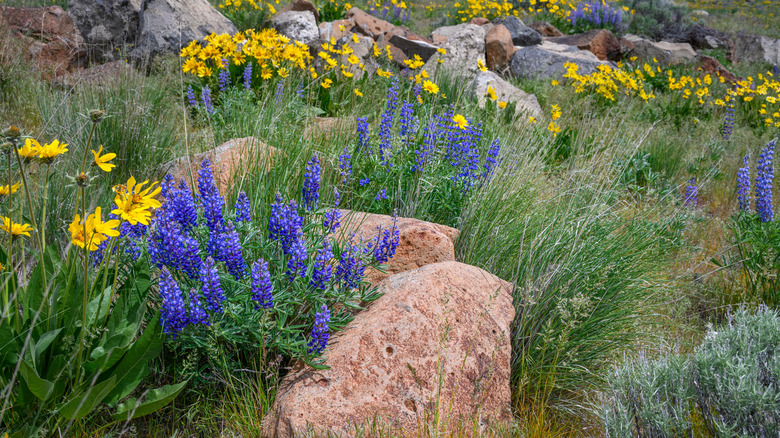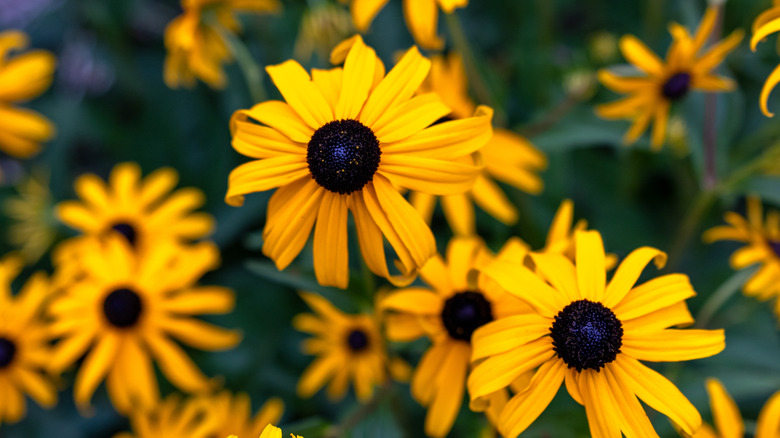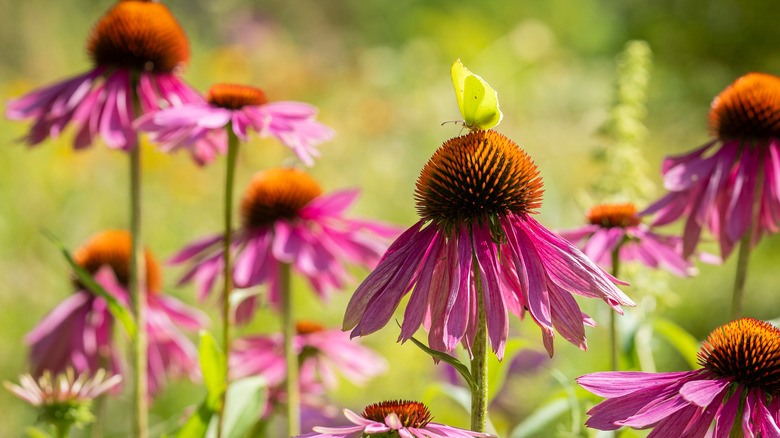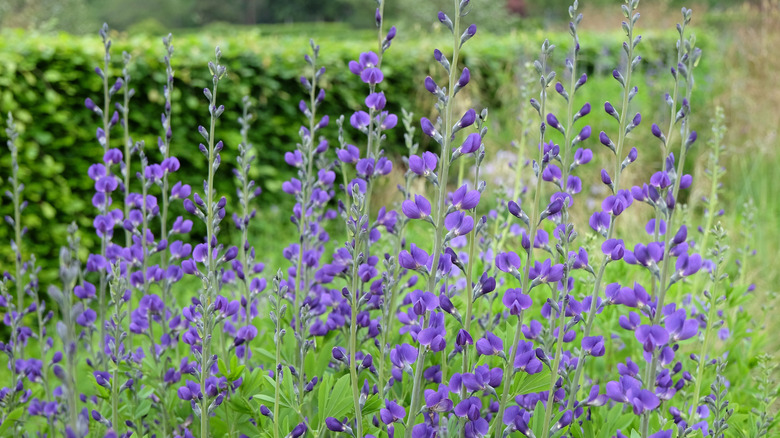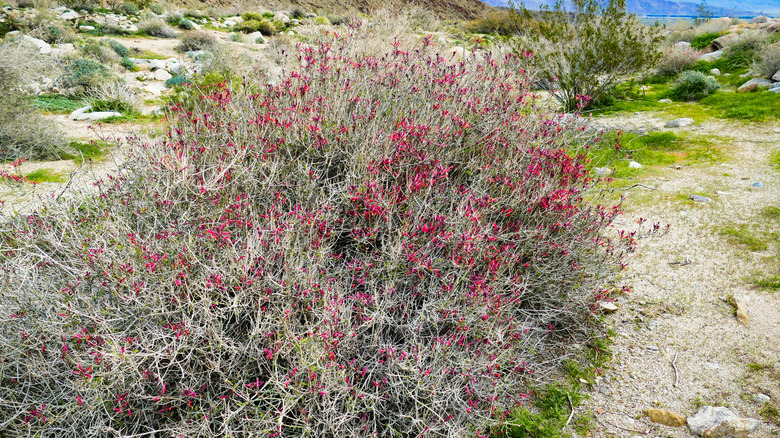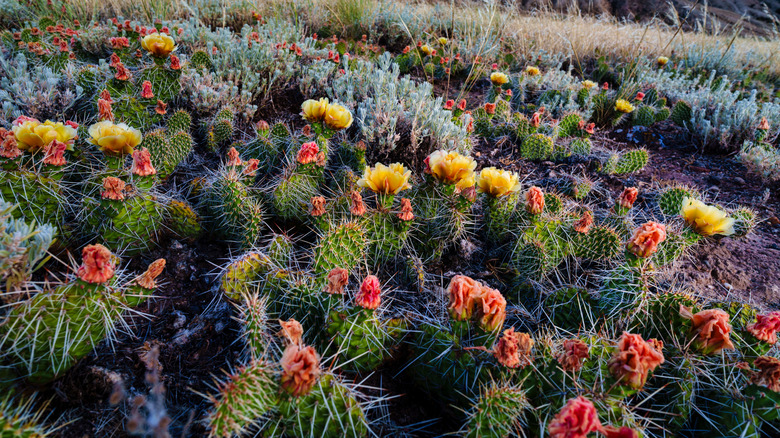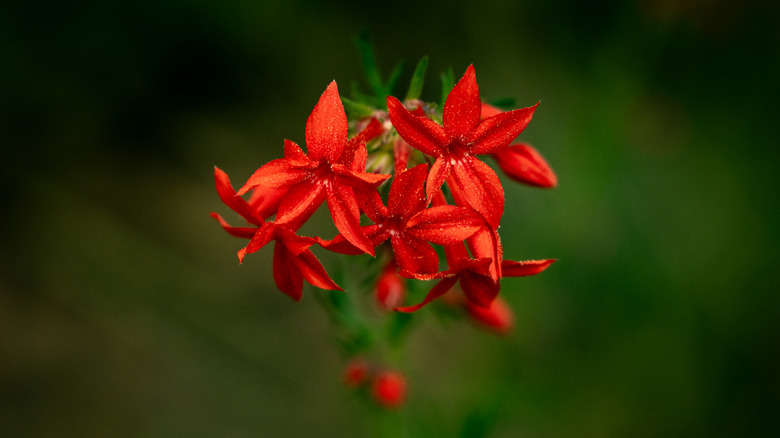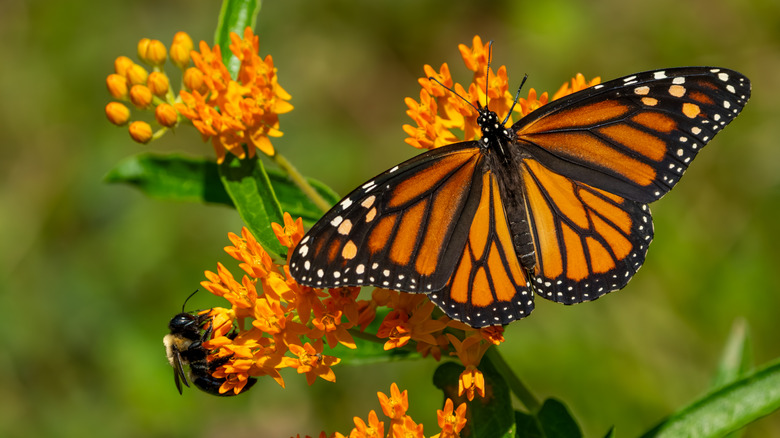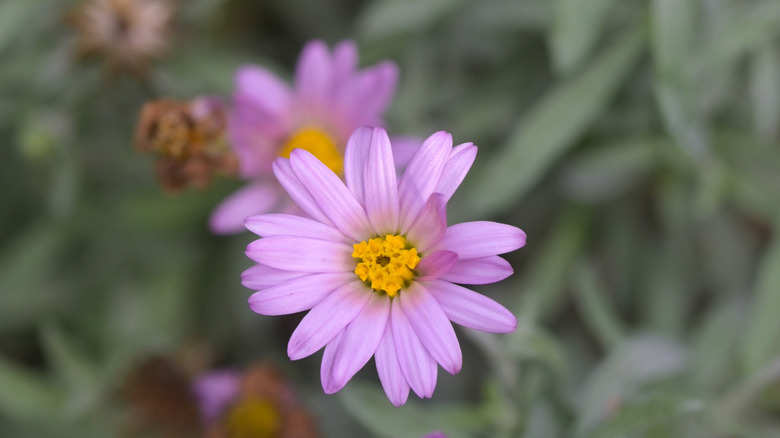11 Native Flowering Plants That Thrive In Dry Climates
If you live in a dry climate, growing flowering plants can be challenging. Rain doesn't come often, and the rate of evaporation can often be higher in these regions compared to others. As a result, even when it does rain, it can feel like the moisture doesn't stick around for long. However, while there are many plants you shouldn't grow in a dry climate, living in one of these regions doesn't mean you need to give up on a thriving garden filled with a variety of native flowers. Instead, you'll just need to get creative in your planning.
All plants need water, but some need less than others. As a result, when you're picking out native plants that thrive in dry climates, like coneflowers or prickly pears, it's important to choose plants that don't mind a little drought. Many plants have adapted this ability by evolving to make the most out of the water available and minimize evaporation, such as developing specialized leaves or roots. This makes them perfect if you're looking for a way to add color to your garden without needing to maintain high levels of moisture. One of the added bonuses of choosing native plants for a dry climate is that they're uniquely adapted to their native regions. As a result, they can be easier to grow (and maintain) compared to non-native species that aren't adapted to the climate.
Black-eyed Susan
Black-eyed Susans (Rudbeckia hirta) are a classic when it comes to flowering plants native to the United States. These flowers thrive in USDA Hardiness Zones 3 through 9. These flowers have adapted to handle droughts and dry climates by creating fewer leaves that are smaller than other species. This allows them to conserve more water and thrive in places other flowers fail. They're also no stranger to bright light, needing full sun to grow best. Black-eyed Susans are also popular cut flowers, with eye-catching yellow petals and black centers that bloom in the spring and summer.
Coneflower
While they do look similar, coneflowers (Echinacea spp.) aren't the same as black-eyed Susans. Coneflowers like the eastern purple cornflower (Echinacea purpurea) are native to the eastern and central United States, where they bloom in a variety of colors come summer. Although there are many varieties of coneflower, those like the eastern purple coneflower are hardy in zones 3 through 8. Like black-eyed Susans, coneflowers have evolved leaves that can withstand regular drought conditions. They can also thrive in drier climates thanks to their taproots that can store up water, allowing a little hydration to go a long way.
Rattlesnake master
Just like rattlesnakes can handle those desert-like conditions, rattlesnake master (Eryngium yuccifolium) also thrives in dry conditions. Drought and soil that is occasionally dry are no problem for these unique plants. In fact, it does best in dry, loamy soil, though it can tolerate other environments as well. These lesser-known native flowers add a sharp touch to drought tolerant gardens. In the summer, they bloom with dense, globe-shaped flowers that resemble spiked balls. While their appearance may seem extraterrestrial, rattlesnake masters are native to the central United States and are hardy in zones 3 through 8.
Blue false indigo
Blue false indigo (Baptisia australis) is native to the eastern and central United States, with a striking lavender-like appearance once its flowers bloom in the spring and summer. They're also hardy in zones 3 through 9, with perennial growth you can enjoy year after year. Blue false indigo is able to thrive despite the challenges presented in a dry climate because of its taproot, as well as its ability to add nitrogen to otherwise poor soil. Blue false indigo also thrives in full sun, perfect for those long sunny days in dry areas.
California poppy
California poppies (Eschscholzia californica) are a great flowering plant for beginner gardeners, as they're easy to grow and can reseed for color that returns every year. These flowers, which bloom with eye-catching orange petals in the early spring, are native to grasslands on the west coast and are the state flower of California. California poppies grow well in poor soil that may not have an abundance of nutrients. They also handle drought well, making them perfect for climates that aren't strangers to dry spells. Keep in mind that their proficient reseeding can require some taming in your garden.
Chuparosa
A stunning flowering shrub, chuparosa (Justicia californica) showcases red, tubular flowers similar to that of the trumpet honeysuckle. It's native to the dry and hot regions of the southwestern United States, allowing it to hold up to tough weather conditions. And the best part? Not only is this a native plant with flowers, but it's a native plant with flowers that hummingbirds love. In fact, its common name also translates to mean "hummingbird." Chuparosas do have a limited growing range, however, as they're only hardy in zones 8 to 10.
Prickly pear cactus
When it comes to native flowering plants that thrive in dry climates, the prickly pear cactus (Opuntia spp.) checks all the boxes — all without being your traditional wildflower. Hardy in zone 3 all the way to 11, these drought- and heat-tolerant cacti can be a go-to for filling a drought-tolerant rock garden. Plus, they're native throughout much of the United States, from the east coast to the west. It blooms in the summer in a range of colors, from yellow and orange to red, providing a unique way to add a splash of saturation.
Scarlet gilia
A staple in hummingbird gardens through the western and southern regions of the United States, scarlet gilia (Ipomopsis aggregata) sports eye-catching clusters of red tubular flowers. And, as an added bonus, they bloom later in the year from August to October, providing color after many other flowers have faded. Scarlet gilias can handle dry soil with little moisture, which makes them perfect for areas with more prolonged periods of drought. Expect to see these flowers as perennials in zones 6 through 9.
Milkweed
If your goal is to attract more pollinators in the face of environments known for dry soil, drought, or even poor soil, then this central and eastern United States native flower is a must-have. Milkweed (Asclepias syriaca) is the preferred plant for monarch butterflies, as well as a variety of other insects. You can expect blooms in the summer months, in which milkweed shows-off fragrant, colorful flowers. Milkweed also does best when exposed to full sun conditions. This plant is hardy from USDA zone 3 all the way to 9.
California aster
California asters (Corethrogyne filaginifolia) are native to the western United States, specifically California and Oregon. Here, it grows well in full sun with little supplemental water, handling both dry soil and drought with ease. As a result, this is a fairly low maintenance plant that won't need much hands-on work throughout the year. It's also hardy in zones 8 through 10. California asters bloom starting in the summer, with silver-purple petals and bright yellow centers. Along with fitting into a drought-tolerant garden, you can also add them as a durable, evergreen touch to pollinator gardens.
Tickseed
Tickseed (Coreopsis spp.) is a native flower that you can find throughout the United States, typically falling into zones 4 through 9 alongside many other perennials. It offers a cheerful bright yellow flower that doesn't need a lot of maintenance (or water) to light up your yard. When it comes to dry climates, tickseed have learned to thrive in this areas similar to coneflowers and black-eyed Susans: through growing fewer, smaller leaves. Because there are different species, you may see different bloom times. However, keep an eye out for these tall, show-stopping flowers in the summer and fall.
